A Self Inspection Analysis With This Exciting Art Routine
Self-inspection is to take care of oneself by observing our own feelings. It has many psychological benefits. Amongst the most important are control of mood swings and improved well-being. The idea is to dedicate time to ourselves to notice our emotions.
There are many ways to self-inspect. The importance is to do it from a neutral standpoint. That is where art activities become tremendously valuable. Art is a great tool to express, without being judgmental. It is a form of expression free from labels and restrains.
Self Care
Taking care of oneself means to develop habits that enhance our well-being. One of the most important ones is to dedicate time to notice how we feel. Especially, notice those that lower our stress levels and boost happiness or a tranquil state of mind.
Acknowledging how we feel helps us find solutions for what bothers us. It is not healthy to suppress our emotions. It is healthy to observe them, to come up with a clear definition to find a path to work on.
Why Art?
Art is a medium where you put your feelings before your thoughts. You get to express without constraints. Expressing without the need for words is liberating. There are no preconditions and all feelings are valid.
Taking care of our emotions is important as we do with our physical bodies. This way, we develop a dialogue between our emotions and the outside world. Using art can make us have a better glimpse of our feelings. Some situations start to make sense once we discover why we feel a certain way.
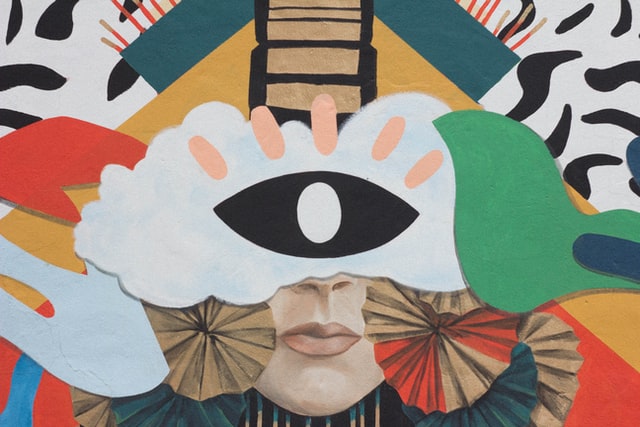
What goes on in our heads when we make art? We feel a rush of endorphins and that is good for our well-being.
Apart from everything mentioned before, art enhances problem-solving skills. This happens because art helps us develop our creative skills. Having more imagination broadens up our chances of finding solutions.
Develop Creativity for Self-Inspection
The fact that we develop something new visually, is a tremendous practice for our imagination and our perceptive skills. Visual representations help us navigate our lives more practically.
When we draw or paint, we stop focusing on what makes us desperate or depressed and we have a wider perspective of our lives. Having a bad moment doesn’t look so bad when we put it into perspective.
For example, if you draw what is bothering you, you can get rid of the feeling of despair. Everyone is capable of self-expression. That is why art is a great tool for self-inspection because we all can create some visuals.
Grab Your Tools
Choose an inspiring blank notebook, something to draw or write with, and begin. There are many colors to choose from. Also, just using ink is quite inspiring.
Look for ways to engage completely in the experience. You might want to add some music or play with materials that you can touch. For example, watercolors, clay, or wet markers that you can blur with your fingers.
Have fun and explore the tools you have at home. You can even glue visuals from magazines or other fun activities you remember doing when you were a child.
Don’t think that you need to finish a project. It’s about experimenting and using what you have at hand to express. There is no wrong answer here, it is absolutely valid to do whatever you choose to do. Stop or continue whenever you feel like it.
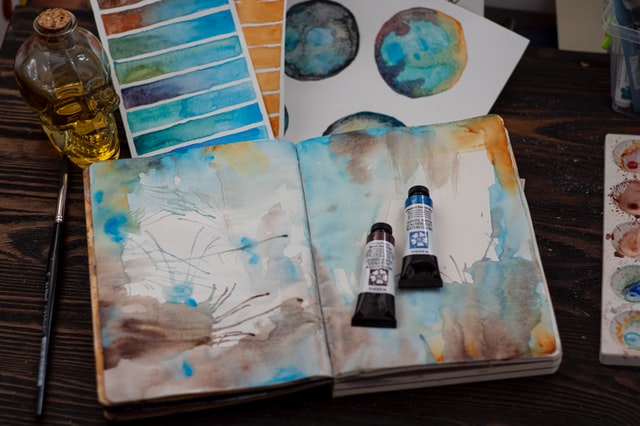
Where to Start
Start by breathing and observing how you feel, then get it all out. Many questions trigger our soul to speak. Also, just by tuning into our breathing and making a pause during the day is quite beneficial.
Often, by taking a pause, one can observe better what is going on. This will break the fear of a blank page. Simply by acknowledging what we are feeling and thinking of it a source of inspiration.
Also, think of it as a way of being heard. Instead of shouting and hurting someone else, scribble. A simple but very rewarding practice is to wish the best for the people that sometimes hurt us. Draw hearts or an object that represents forgiveness.
Answer Some Questions
These are some questions that might help you have a broader observation about yourself:
- How do I feel?
- What is positive in my life?
- What am I grateful for?
- What brings me peace?
- What is my mantra?
- What scares me?
- How do I find inspiration?
Habit of Self-Inspection
There are many ways that art helps us express. The idea is to make this art activity a habit. That is because it is important to engage in the creation, rather than in the outcome. The benefits come from doing art, rather than from the results.
I learned by reading this book that a habit is composed of a trigger, a routine, and a reward. For creating a habit of self-inspection by using an art routine you can do the following:
- The trigger: commit to a time that works. Look for something that you already do automatically, like washing your teeth before going to bed. As little as 10 minutes a day goes a long way! The trigger could be right after you wake up, with your morning coffee, or after you have washed your teeth. These are all triggers that remind us to grab our notebook and begin expressing.
- The routine: drawing.
- The reward: the endorphins in your brain thanks to art. A beautiful creation. A present for someone. A piece of decoration for your home.
Don’t expect to want every day to engage in a self-inspection practice. You may not feel like it, and that is ok. Your creativity might also be better some days than others. The value comes from showing up every day. The creative juices will flow. Because the brain is receiving a reward, showing up will trigger your artistic persona.
Preventive Health by Self-Inspection
The habit of self-inspection with an art routine is a form of preventive health. Before feeling overwhelmed with stress or with the burden of everyday life, we can address our troubles by observing them from a neutral point of view.
Art-as-therapy is naturally preventative because it employs therapeutic creativity in the service of sustainable wellbeing and not just as a means to a finite end.
Thomas Shortliffe
Drawing is different than writing in a journal because words are sometimes not enough to express deep inner feelings. For example, the feeling of being nervous. There are a lot of words to describe this feeling. Anxious, nervous, stressed, preoccupied, etc. Why if we don’t think any of these words is a true definition of our feelings? Why if it is a combination of anxiety and happiness?
It could be, that because there are no words to describe the mix of feelings, we tend to label what we are feeling. Instead, when we draw, we give our soul space to feel. Drawing is a form of meditation. When we draw we focus on what is in front of us. Our breathing rhythm changes, and we get more in touch with our feelings.
Example of Self-Inspection
Here is an example. I grabbed my notebook at night and I was feeling angry. I started scribbling hard and was concentrating more on the ink and I began breathing differently. My perspective towards my feeling of anger changed completely. I was able to observe my anger as an outside spectator. Where was my anger coming from?
I was sure I was angry, that was the word I used to define my feelings. The truth was, that I was disappointed. As a consequence, I was angry, but I was disappointed with the government (well, who isn’t?). I know where my limits are, and I know how far I can do something about it. After all, why suffer when it doesn’t depend on you?
The Artistic Methods for Self-Inspection
1. Create a Pattern
Make a repetition of a figure or something that you like. Every day add another shape to a big creation. Or, begin a new page with your composition.
When you are adding bits here and there to your composition, you can forget about what you should or have to be drawing. Instead, you focus on what you feel.

Start with something that feels good to you. The importance here is to focus on a process, rather than on the results. Look for objects or expressions that engage your creative mind. When you create a pattern, you can create new ways to communicate.
Every day is different, and you will feel that every occurrence of your pattern is different. One day it could look darker, or stronger than another day. The beauty of this activity is to see how you change throughout each day.
2. Draw the Same Object Every Day
As with the art activity of the patterns, drawing the same object helps you have a plan to explore your feelings. You don’t have to come up with ideas for creating, rather you can self-inspect your soul.
I have a plant on my desk that I tend to draw every day. It is a constant reminder to draw and breathe while doing it. I don’t waste time looking for something to draw. I have it at hand and it is a great way to start my creative flow.
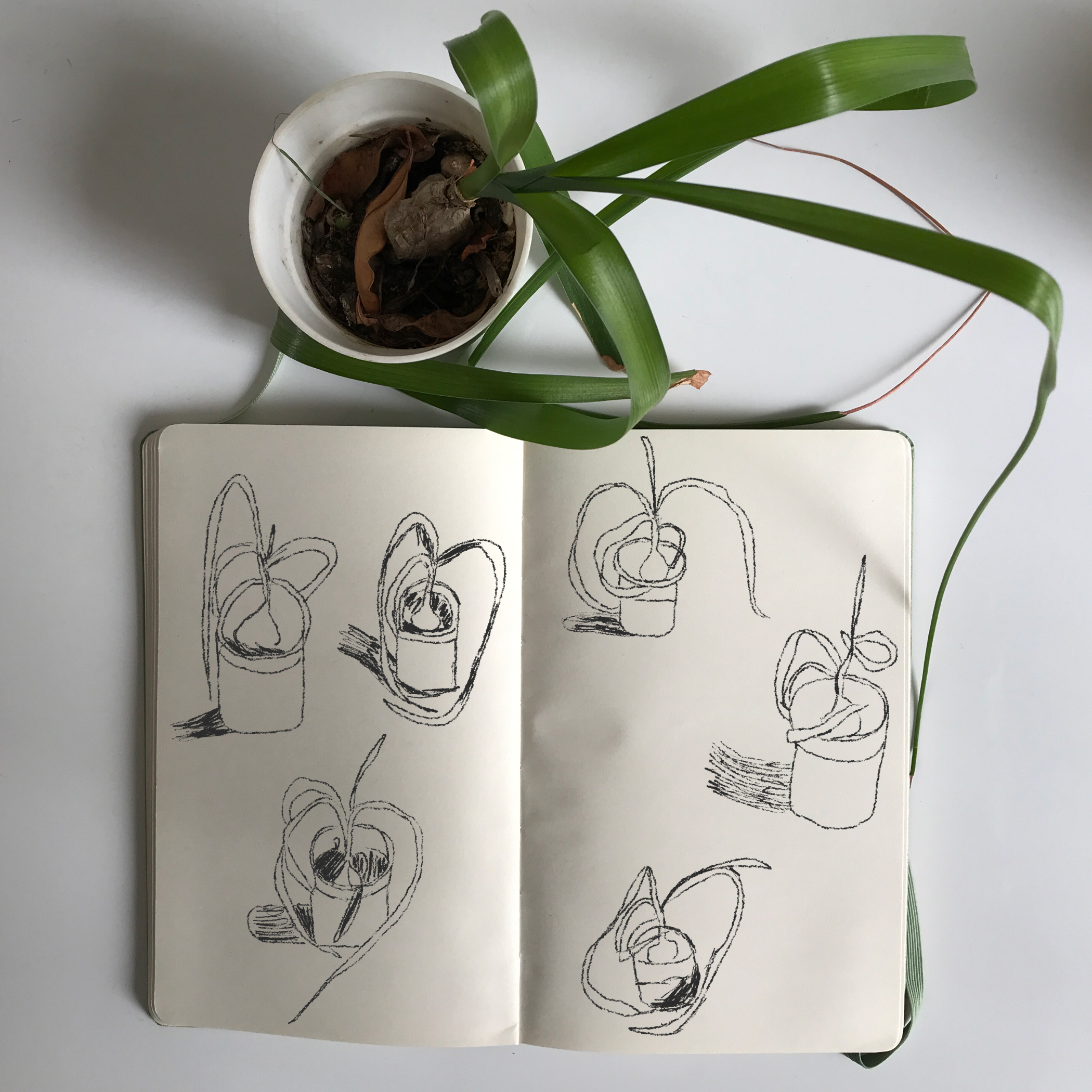
3. Draw Your Emotions
This one I love it. At first, it was homework from my teacher. Now, it has become a way to inspect the way I feel. Usually, if I am angry, I want to sketch hard. If I am gloomy I tend to draw lines going downwards, and if I am happy they go up!
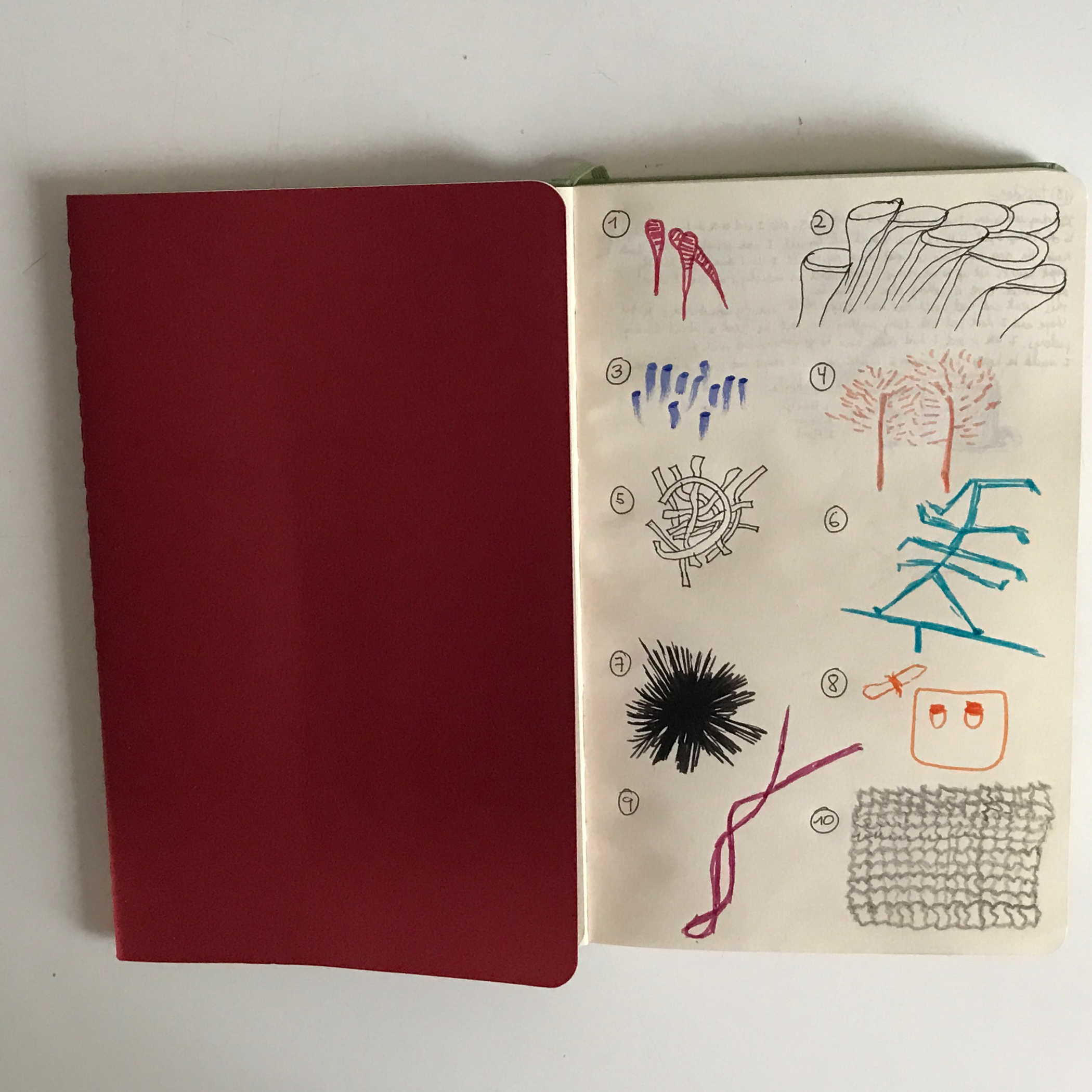
4. Play with Colors
There are several ways you can inspect your feelings with colors. You can do the following:
- Color code your emotions.
- Pick the color according to the day.
- Use the colors according to your mood.
Just as you do it with your outfit or your makeup, you can do the same with the colors. For example, in autumn you can choose brownish colors, and in summer go with yellow. Also, if you have a special occasion and you are wearing black, you can paint with ink.
This will help you dig into what you are feeling because you get in tune with your surroundings. For example, if it is raining outside you might want to use blue. By being in tune with your surroundings you could find some inspiration. Also, carrying a new color is like having a new toy. You never know where the inspiration might come from. Drawing anywhere you are is an advantage for self-inspection.
Also, you can try to engage in this exciting art class. It is a way to create a combination of colors by subtraction. Later on, you add faces to a collage of colors and shapes. You can create a mix of colors one day, and add faces according to your mood. It is a way of self-inspection because you get to decide how the expression of the faces mimic your feelings. Also, the colors have a lot of hidden meanings.
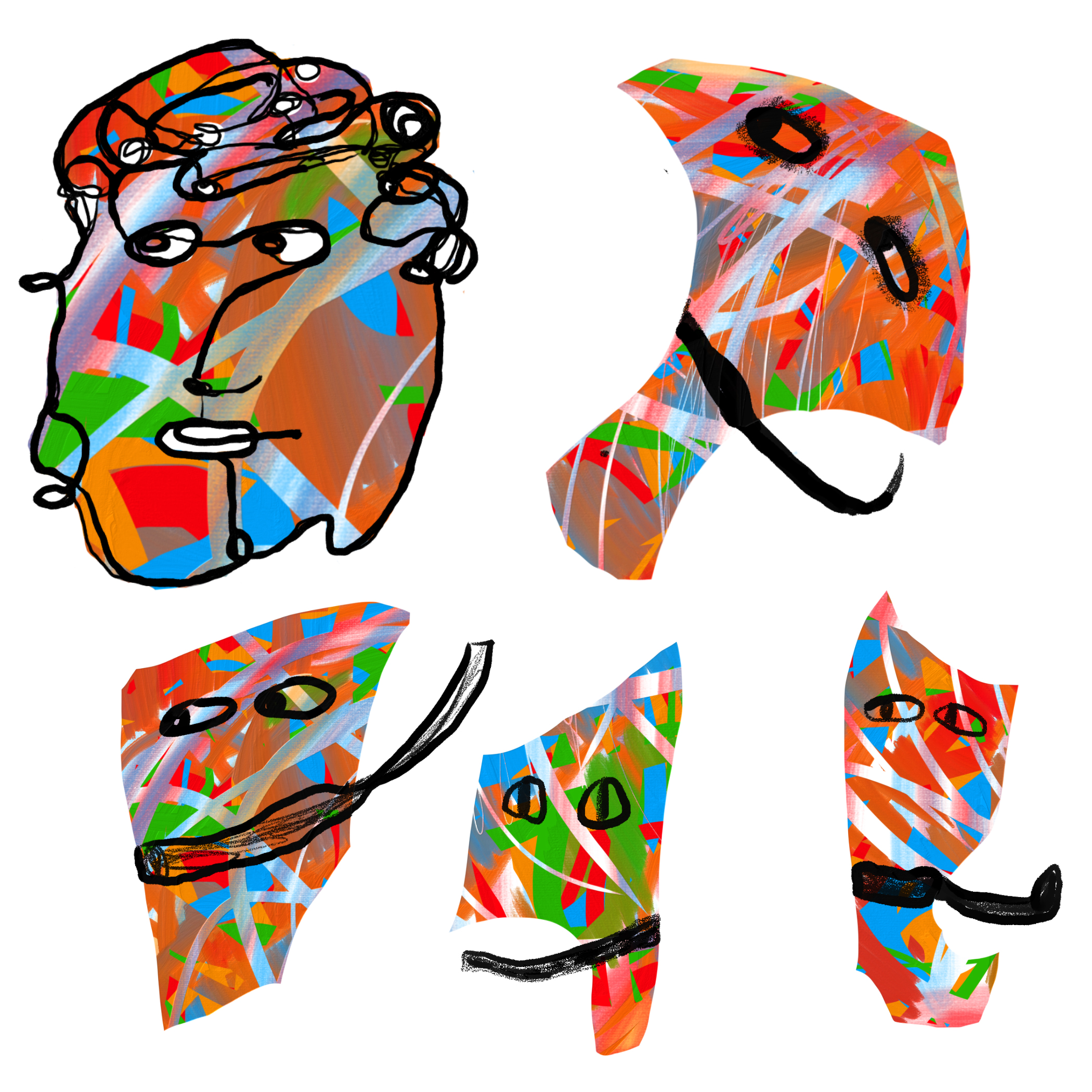
What To Expect
At first, you might forget that you have a journal that you can use to express your emotions. As time passes and you start to develop the habit, you look forward to it. If you carry a notebook you may want to make annotations of thoughts that pop into your mind. Not only will you observe the way you are feeling, but you might develop a way to acknowledge your feelings.
A clear understanding of ourselves is the right path to self-awareness. Knowing what we are, what we like and dislike makes us more in control of our feelings and thoughts. After all, our priority should be to feel tranquil and happy.
Isn’t that what we all search in the end? This self-inspection practice by using art is the right path for a more meaningful and mindful life. Life with art.








